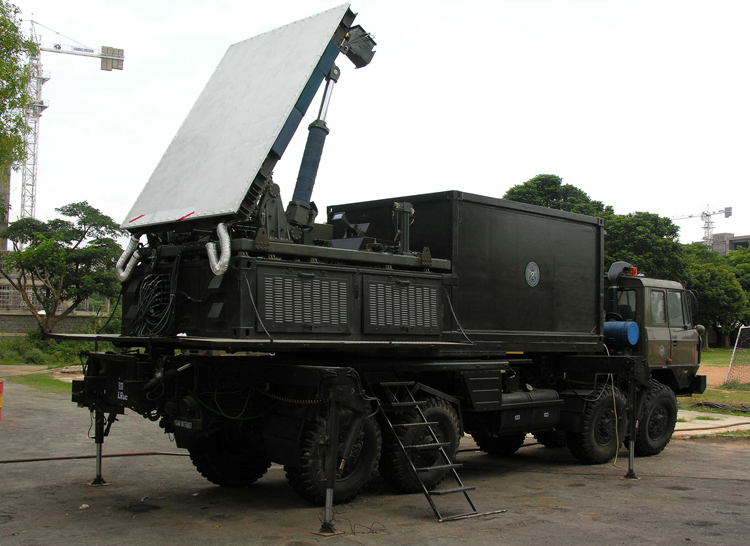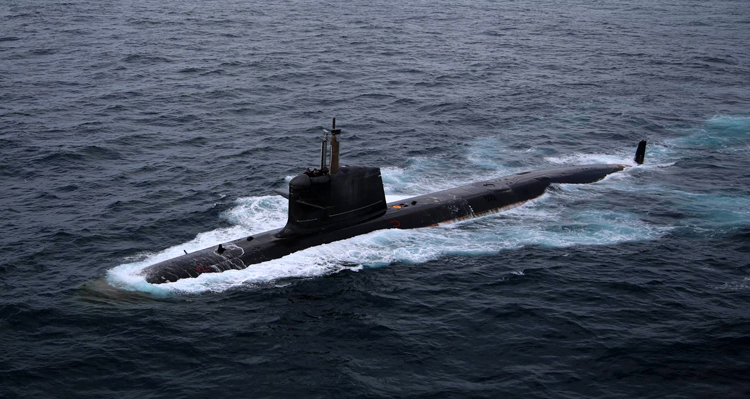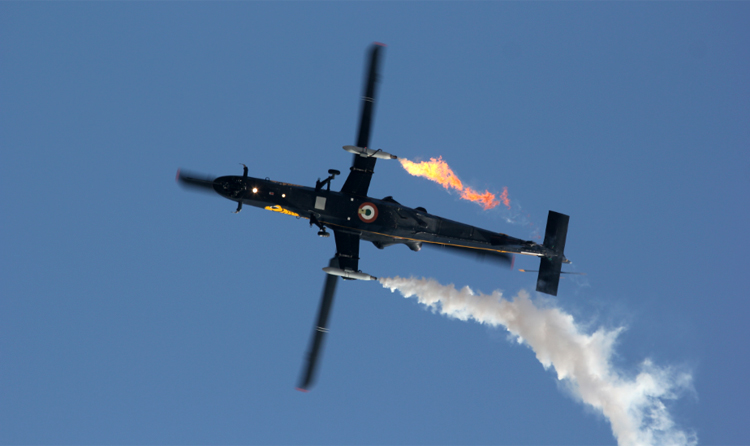INDIAN ARMED FORCES CHIEFS ON OUR RELENTLESS AND FOCUSED PUBLISHING EFFORTS

The insightful articles, inspiring narrations and analytical perspectives presented by the Editorial Team, establish an alluring connect with the reader. My compliments and best wishes to SP Guide Publications.

"Over the past 60 years, the growth of SP Guide Publications has mirrored the rising stature of Indian Navy. Its well-researched and informative magazines on Defence and Aerospace sector have served to shape an educated opinion of our military personnel, policy makers and the public alike. I wish SP's Publication team continued success, fair winds and following seas in all future endeavour!"

Since, its inception in 1964, SP Guide Publications has consistently demonstrated commitment to high-quality journalism in the aerospace and defence sectors, earning a well-deserved reputation as Asia's largest media house in this domain. I wish SP Guide Publications continued success in its pursuit of excellence.
- MoD initiates comprehensive review of Defence Acquisition Procedure 2020, pushes for defence reforms
- G7: The Swansong
- Kalinga Connect: South Asia to Polynesia
- Advanced MRSAM for India for a greater firepower
- Must Credit DRDO for Operation Sindoor, now what is next for defence R&D?
- Operation Sindoor | Day 2 DGMOs Briefing
- Operation Sindoor: Resolute yet Restrained
MoD Revises its Import Ban Decision
In case the domestic industry is unable to supply equipment urgently needed by the armed forces, in the stipulated time frame, or quantity or where there are any other technical issues, specific cases of imports could be taken up to meet immediate requirement

It was officially touted as a major push to Atmanirbhar Bharat (self dependent India) and promotion of indigenisation, but it seems that the defence ministry seems to have realised its follies in imposing strict ban on import of defence systems which were likely to be made available from domestic sources. According toreports, the defence ministry has revised its major policy decision taken last year on August 9, to impose restrictions on import of specified items, for which a negative list of 101 items was finalised and released to the public.
Later, on May 31 this year, the MoD had further expanded this with a new list of 108 items. This was announced by Defence Minister Rajnath Singh himself. The restrictions on the import of 108 items that figured in the second expanded list was supposed to have come into effect from December 2021 to December 2025.
According to reports the defence ministry has updated its last year’s policy decision of imposing ban on import of101 items which was subsequently expanded this year in the end of May. Defence Minister Rajnath Singh is reported to have okayed the ministry’s proposal to allow imports of certain items after due scrutiny by a select committee of Defence Indigenisation Committee (DIC) which will be chaired by the Chief of Defence Staff (CDS) consisting of all relevant stake holders which will decide on specific requests of the armed forces. A notification was prepared for this purpose.
In the name of Atmanirbhar Bharat, the combat readiness of the armed forces was being adversely impactedas domestic manufacturers were unable to supply them on time and imports were not allowed
According to this notification, in case the domestic industry is unable to supply equipment urgently needed by the armed forces, in the stipulated time frame, or quantity or where there are inadequacies in the equipment affecting safety of the troops or in case of any other technical issues, specific cases of imports could be taken up to meet immediate requirement, based on the recommendations of the DIC. According to sources, care has been taken to not allow the dilution of efforts to curb imports, but will be useful to meet urgent requirements of the armed forces in case of non-delivery or delays by domestic manufacturers. Also, a new DIC is also being constituted to draw up negative import lists and five exceptions to the armed forces. The DIC will oversee the implementation of the negative import list and will progressively expand it to cover more products and services. The DIC will also prepare new negative import lists which has been described as positive indigenisation list by the MoD. The DIC will also consult industry and other stakeholders to identify more systems that should no longer be imported by the forces.

Defence Minister Rajnath Singh had announced on August 9, 2020 that there will be an import embargo on 101 items and described it as a measure to boost defence indigenisation. However, according to sources, the forces were feeling handicapped because of non-availability of negative listed defence items from domestic sources urgently needed by them. In view of the rising tension on the northern and western borders, forces readiness in fighting the battle was being impacted by this decision as domestic manufacturers were unable to supply them on time and imports were not allowed. The armed forces were facing a great dilemma. In the name of Atmanirbhar Bharat, their combat readiness was being adversely impacted. Hence, the MoD had to take this policy changing decision.
Prime Minister Narendra Modi in his address to the Nation on May 12, 2020 had given a clarion call for a self-reliant India based on the five pillars, i.e., Economy, Infrastructure, System, Demography & Demand and announced a special economic package for Self-Reliant India named ‘Atmanirbhar Bharat’. Taking cue from that evocation, the Department of Military Affairs (DMA), Ministry of Defence (MoD) had prepared a list of 101 items for which there was an embargo on the import beyond the timeline indicated against them, as indicated in the Annexure released by the MoD.
With the declared embargo on import of 101 items, it was estimated that contracts worth almost 4 lakh crore will be placed upon the domestic industry within the next five to seven years
This was described as a big step towards self-reliance in defence. It also offered a great opportunity to the Indian defence industry to rise to the occasion to manufacture the items in the negative list by using their own design and development capabilities or adopting the technologies designed and developed by Defence Research and Development Organisation (DRDO) to meet the requirements of the Armed Forces in the coming years.
The list was prepared by MoD after several rounds of consultations with all stakeholders, including Army, Air Force, Navy, DRDO, Defence Public Sector Undertakings (DPSUs), the then Ordnance Factory Board and private industry to assess the current and future capabilities of the Indian industry for manufacturing various equipment within India.
Almost 260 schemes of such items were contracted by the Tri-Services at an approximate cost of 3.5 lakh crore between April 2015 and August 2020. With the declared embargo on import of 101 items, it was estimated that contracts worth almost 4 lakh crore will be placed upon the domestic industry within the next five to seven years. Of these, items worth almost 1,30,000 crore each are anticipated for the Army and the Air Force while items worth almost 1,40,000 crore are anticipated by the Navy over the same period.

The list of 101 embargoed items comprises of not just simple parts but also some high technology weapon systems like artillery guns, assault rifles, corvettes, sonar systems, transport aircrafts, light combat helicopters (LCHs), radars and many other items to fulfil the needs of our Defence Services. The list also includes, wheeled armoured fighting vehicles (AFVs) with indicative import embargo date of December 2021, of which the Army is expected to contract almost 200 at an approximate cost of over 5,000 crore. Similarly, the Navy is likely to place demands for submarines with indicative import embargo date of December 2021, of which it expects to contract about six at an approximate cost of almost 42,000 crore. For the Air Force, it was decided to enlist the light combat aircraft LCA MK 1A with an indicative embargo date of December 2020. These are anticipated at an approximate cost of over 85,000 crore. Hence, there are highly complex platforms that were included in the list of 101 items, of which details of three examples are given.
The list of 101 embargoed items comprises of not just simple parts but also some high technology weapon systems like artillery guns, assault rifles, corvettes, sonar systems, transport aircrafts, light combat helicopters (LCHs), radars and many other items
According to MoD, the embargo on imports was planned to be progressively implemented between 2020 to 2024. The aim behind promulgation of the list was to apprise the Indian defence industry about the anticipated requirements of the Armed Forces so that they are better prepared to realise the goal of indigenisation. The MoD has adopted many progressive measures to encourage and facilitate ‘Ease of Doing Business’ by the defence production entities. All necessary steps would be taken to ensure that timelines for production of equipment as per the Negative Import List are met, which will include a co-ordinated mechanism for hand holding of the industry by the Defence Services.
Defence officials had them indicated that more such equipment for import embargo would be identified progressively by the DMA in consultation with all stakeholders. A due note of this was also be made in the Defence Acquisition Procedure (DAP) to ensure that no item in the negative list is processed for import in the future.





